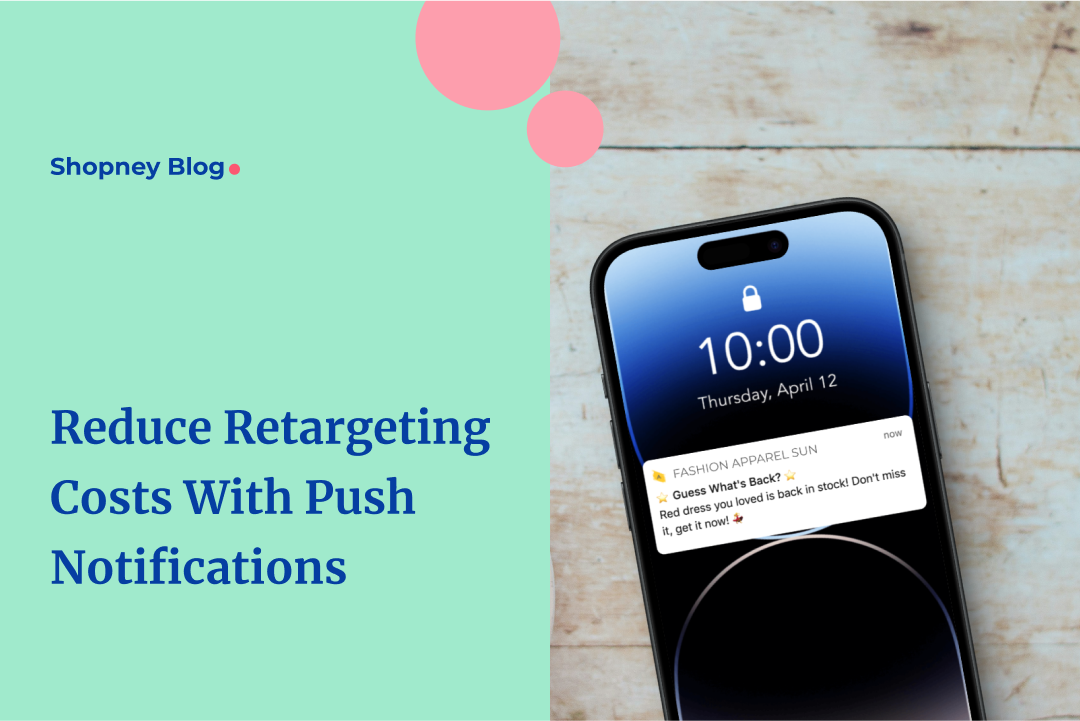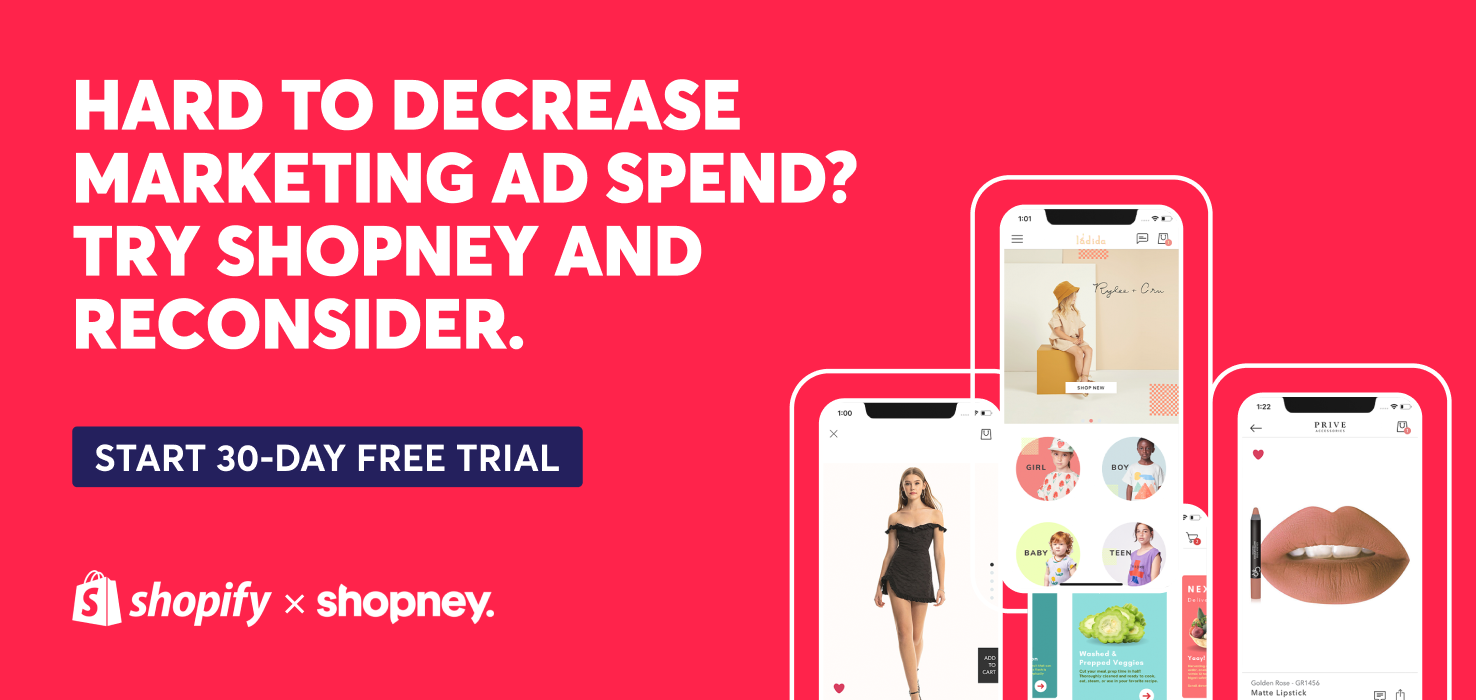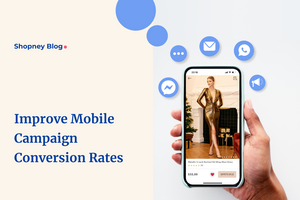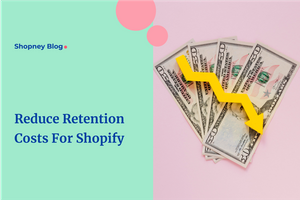
Retargeting ads can effectively re-engage website visitors who didn't convert on their first visit. But if it was the only and best way to retarget customers, we wouldn’t be coming with this blog.
These campaigns can become expensive quickly, especially if you're blasting ads across multiple platforms.
Push notifications, on the other hand, are a cost-effective alternative for reconnecting with your audience.
In this blog, we'll compare the costs of push notification campaigns vs retargeting ads. You'll learn which push notification types tend to outperform traditional ads. We'll also cover push notification best practices for optimizing the ROI of your retargeting campaigns.
Push notifications campaigns vs. Retargeting ads: Cost analysis
Comparing the cost here just in terms of money invested and returns generated might not give the true picture because factors like trust and loyalty also come into play. Here’s a comparison between what running these ad campaigns can cost you:
1. Direct cost comparison
Retargeting ads can cost you anywhere from $1 to $5 per action or conversion. So, let's say you manage to get 1000 customers to convert in a month through retargeting, and you'll be paying at least $1000 for that.
For push notification campaigns, on the other hand, you'll only be paying the charges of a push notification service provider, which is usually around $100-200 per month. That's just 10% of the cost compared to retargeting ads.
The upfront cost savings with push notifications is huge. While retargeting requires continuously paying for impressions and clicks, push notification campaigns let you communicate directly with an opted-in audience for a flat monthly fee.
You aren't wasting ad spend on people who will likely never convert. Every message goes to someone who has already engaged with your brand.

2. Using push notifications and retargeting in sync
You might be thinking that with retargeting ads, you can reach almost everybody who allows cookies anywhere on the web, which is true.
But no one said you can't use both push notifications and retargeting campaigns in sync. In fact, that's a recommended strategy.
You can even take the amount you're saving on push and reallocate some budget to run awareness campaigns to drive more users towards your website or app.
Getting them to opt-in to push notifications allows you to then retain and retarget that audience at a fraction of the ad costs. This multi-channel approach lowers your dependence on external advertising platforms and improves the total revenue you generate.
The key is using retargeting strategically for top-of-funnel marketing while relying more on higher-converting, lower-cost push notifications to nurture prospects through the funnel. A healthy mix of both channels can substantially improve your overall marketing effectiveness.
3. Improving relevance and reducing wasted spend
Another problem with retargeting ads is targeting relevance. If you don't properly integrate tracking pixels, you could be wasting money reaching customers that already bought a product because most retargeting ads are not behavior-based.
When users enter your site, you leave a cookie on them. Even if they directly decide to purchase on that first visit, they'll still be retargeted with an ad later on. You waste your budget here by displaying an irrelevant ad. And even your brand's reputation will be negatively affected by appearing intrusive.
Push notifications solve this through event-based behavioral targeting. These messages are triggered by the specific actions a user takes on your website or app.
For example, if someone browses a product page but doesn't add it to their cart, they'll receive a push reminding them to complete that purchase. However, that same notification won't go out if they did add the item since that event excludes the abandoned cart trigger.
This intelligent automation based on real-time browsing behavior guarantees that users only get highly personalized messages tailored to their interests and journey stage.
The relevance pays off in much higher engagement and conversion rates than untargeted ads. You avoid wasted spend while fostering long-term customer loyalty.
4. Building trust through user consent
A major disadvantage of retargeting ads is that users can feel harassed and find the "following around" sensation creepy.
According to Statista, in 2019, roughly 25.8% of internet users blocked ads on their connected devices—a number expected to continue growing over time.
The overwhelming amount of untargeted advertisements displayed on websites makes for an unpleasant user experience. This inevitably leads many people to install ad blocker extensions that prevent those retargeting ads from being seen, resulting in wasted marketing spend.
Push notifications, on the other hand, are not affected by ad blockers since they require explicit user opt-in and consent.
When subscribers allow your browser or app to push messages, you have their permission to communicate with them directly. The notification will be delivered every time, whether on mobile or desktop.
This consent-based model builds trust that retargeting ads often lack.
Rather than disrupting the user's experience with intrusive ads, you're providing value to those who opt in to stay connected with your brand. They don't find push notifications creepy or inappropriate because you've put them in control—they can opt-out anytime.
App push continues this trust cycle. As long as users keep notifications enabled for your app, you can nurture relationships and drive engagement through timely, personalized messages. There's no "following them around" or bombardment.
Leveraging push means spending less while building far more goodwill by providing a transparent, consensual experience. The higher acceptance and lack of blocking tech results in much better message delivery than retargeting ads. You invest in channels people welcome, not resent.

Types of push notifications that are more effective than retargeting
Here are some push notification messages that are far more effective than retargeting ads for engaging customers and getting them to take action.
1. Abandoned cart notifications
One of the most effective push notifications is abandoned cart reminders. These are triggered when customers add items to their online shopping cart but exit before completing checkout.
With retargeting ads, you'd have to wait and hope they revisit your site from an ad to potentially recover that sale. Push notifications allow you to instantly re-engage with a personalized reminder about the items still waiting in their cart. This captures them when purchase intent is highest.
Well-timed abandoned cart notifications can recover over 25% of otherwise lost sales. The timely, relevant content cuts through the noise that untargeted retargeting ads get lost in. You regain that prospect's attention at just the right moment.
2. Product recommendations
Like leading eCommerce sites, you can use push to deliver personalized product recommendation notifications based on browse behavior, purchase history, and other predictive data about each subscriber's preferences.
Instead of spraying broad retargeting ads across the web, these 1:1 push messages put the most relevant products in front of an actively opted-in audience. The recommendations come from an interactive experience, where users choose what they want to see more of.
Product recommendation notifications generate 9 times higher conversions than conventional push campaigns. They emulate the experience of having a personal shopper who knows you well and only surfaces items you'll love.
3. Customer feedback requests
Asking for feedback and reviews is crucial, but timing makes a massive difference. Push allows you to automatically trigger a feedback request notification soon after a customer receives their order or interacts with your product/service.
Capturing their fresh experience when memories are fresh leads to much higher response rates than generic blast email surveys. Replacing pepper spray and retargeting ads with incentives like loyalty points or discounts further boost engagement.
Did you know 67% of consumers are willing to provide feedback if offered an incentive? Push notifications give you that valuable voice-of-customer data you'd otherwise miss with traditional outreach.

4. Product review requests
Similarly, you can prompt customers to leave public product reviews at ideal moments through targeted push notifications. For example, after their package delivery or some period of use.
Reviews are incredibly influential in driving more conversions. Yet most ecommerce brands miss out on tons of potential review content due to poor timing and tedious review funnels. Heavy ad prompts getting glossed over doesn’t help either.
Review request push notifications make it easy to collect authentic feedback when products are top-of-mind. And positive reviews can then even be repurposed as user-generated content for future marketing push campaigns that convert far better than disruptive ads.
5. Similar deals and offers
For existing customers, you can drive repeat purchases by pushing new deals and offers matching their interests based on past orders. These hyper-relevant notifications eliminate wasted spend from blasting generic ads and discounts.
Precision push uses actual data about what customers bought and enjoyed before to create hyper-personalized messaging that converts.
Up to 58% of eCommerce revenue comes from just 8% of repeat customers. Nurturing this high-value segment beats paying to find new buyers every time through less effective acquisition ads.
6. Back in stock alerts
A highly effective (probably one of the best) use of push notifications is alerting customers that out-of-stock products they previously expressed interest in are now available once again.
Unlike spam ads for irrelevant or unavailable merchandise, back-in-stock alert push notifications capture demand only when inventory returns. Viewers opt in because they want to know, creating a welcome and anticipated experience.
These notifications are transactional messages that people find helpful, not intrusive. They're facilitated by real browsing behavior and preferences rather than impersonal ad attribution guesswork. The promised relevance pays off in extremely high conversion rates.

Automate your push notifications with Shopney
Now that we’ve painted the true picture of how using push notifications is the way to reduce your retargeting cost, you might have some more challenges. Like determining which push notification campaigns to launch and how to implement them effectively. Shopney has the solution.
Our platform doesn't just convert your Shopify store into a mobile app - it equips you with powerful push notification tools to build lasting customer engagement and drive repeat business.
Using advanced audience segmentation based on behaviors and demographics, Shopney allows you to automate personalized push campaigns that have been proven to improve app activity. From abandoned carts to product recs, review requests, and more, you'll reach the right users with the most relevant messages.
By delivering these timely, tailored notifications, you create more opportunities for customers to engage and purchase within your app. This means no budget is wasted on broad retargeting attempts.



